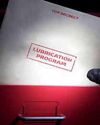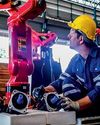
A computer program that taught itself the strategy game "Go" and beat the current world champion
Impressive advancements in facial recognition software Almost instantaneous translation of one language to another (either written or spoken) using freely available online software
With all these advancements, it is natural to ask whether such techniques could be effectively applied to lubrication problems.
The rise in these many examples of machine learning/artificial intelligence is directly linked to the availability of highquality data (and lots of it). Machine learning and artificial intelligence can generally be split into two types: supervised models and unsupervised models. Simply put, supervised models typically find statistical (or regression) models relating input data to output data and provided new input data that is covered by the training data set. These techniques should work well, although they are not able to reliably extrapolate if the new input data is outside that of the training set.
Unsupervised models typically use neural networks. Neural networks, also referred to as "deep learning", are a collection of algorithms loosely modeled on the human brain, designed to recognize patterns. These unsupervised models can effectively "work out" the best model for themselves however, once a good model has been found, it is not always obvious why it works. In other words, the underlying algorithm that the machine learning model has found is not easy to unravel. There are numerous examples where artificial intelligence and machine learning have already been applied within the lubrication/tribology community, including:
この記事は MACHINERY LUBRICATION INDIA の July - August 2022 版に掲載されています。
7 日間の Magzter GOLD 無料トライアルを開始して、何千もの厳選されたプレミアム ストーリー、9,000 以上の雑誌や新聞にアクセスしてください。
すでに購読者です ? サインイン
この記事は MACHINERY LUBRICATION INDIA の July - August 2022 版に掲載されています。
7 日間の Magzter GOLD 無料トライアルを開始して、何千もの厳選されたプレミアム ストーリー、9,000 以上の雑誌や新聞にアクセスしてください。
すでに購読者です? サインイン

The Secrets For Implementing A Clean lubricant Program
If you could find an investment that guaranteed a return 40 times greater than your initial investment, you probably wouldn't pass it up.

MAINTAIN? REPAIR? REPLACE?
When considering the life of any asset, the question arises: what types of interventions should be planned to keep it operating or to restore operation in the event of its failure?

Engineering Reports Should Be Like Bad Movies
I'm frequently asked to review engineering reports, and I'm continually baffled by how many engineers want to take their readers on a journey instead of getting to the point.

WHY SCHEDULED OIL CHANGES AREN'T ENOUGH TO MITIGATE LUBRICANT CONTAMINATION
There are few problems more insidious or damaging to large industrial machinery than contaminated lubricant.

LUBRICATION CONTAMINATION PREVENTION
How many articles have you read, or seminars listened to, that tout the value of contamination control? If you are like me, they number in the hundreds—if not thousands. One thing about these articles and seminars that bothers me is the word “control”.

LUBRICANT CONTAMINATION PREVENTION AND MITIGATION: A Guide For Maintenance Professionals
Lubricants are essential for the smooth and efficient operation of many types of machinery, from engines and turbines to gears and bearings.

TASK-BASED TRAINING | INSPECTING A SINGLE-POINT LUBRICATOR
A single-point lubricator is a device engineered to attach to a single unit to regularly and automatically deliver a small amount of clean grease or lubricating oil to a specific area.

TOP LEADERSHIP FOCUSES FOR IMPROVED RELIABILITY AND COST REDUCTION
Here’s a scenario that may sound eerily familiar – you have a new reliability initiative.

4 KEY ELEMENTS FOR INTERPRETING AN OIL ANALYSIS REPORT
Years ago, a customer came into my office, visibly upset. He had just received his second oil analysis report for one of his Caterpillar gas engines.

ASTM ENHANCEMENTS TO MICROSCOPIC PARTICLE IDENTIFICATION AND DOCUMENTATION
In 1982, Daniel Anderson published his influential book, \"Wear Particle Atlas\", which describes, sizes, and classifies particles found in oil.